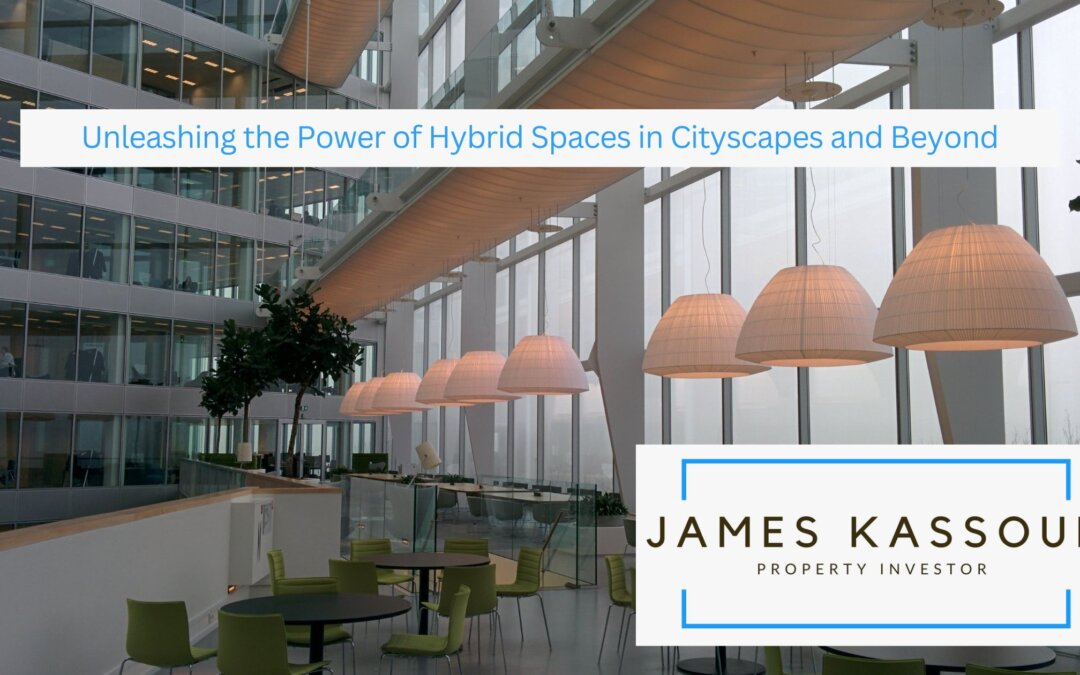In the ever-evolving landscape of urban development, hybrid spaces emerge as a revolutionary paradigm. Hybrid cityscapes refer to multifunctional areas where different aspects of urban life—commercial, residential, cultural, and recreational—intersect and interact seamlessly. This innovative approach to urban planning and architecture goes beyond mere spatial design; it represents a radical rethinking of how city spaces are utilized, experienced, and perceived. As cities around the world face increasing challenges related to population growth, environmental sustainability, and the need for community-centric spaces, blended areas offer a compelling solution. They epitomize the fusion of functionality and aesthetics, tradition and modernity, nature and architecture. This concept transcends the traditional boundaries of urban planning, fostering a more integrated, dynamic, and adaptable cityscape. By leveraging the potential of mixed spaces, cities can transform into more efficient, inclusive, and livable environments.
The genesis of hybrid spaces in cityscapes can be traced back to the multidisciplinary nature of urban planning and architecture, which has historically sought to balance functional, aesthetic, and social objectives. Traditional urban design often compartmentalized city areas into distinct zones—residential, commercial, and industrial—each serving a singular purpose. However, this approach increasingly proved inadequate in addressing the complex needs of growing urban populations and the multifaceted nature of modern life. The shift towards mixed areas emerged from a growing recognition of these limitations and the need for more versatile, adaptable urban environments. This concept is rooted in the idea of ‘mixed-use development,’ which aims to combine various urban functions within a single area or building. The evolution of this concept represents an advancement of this idea, where the integration is not only functional but also aesthetic and social, creating spaces that are not just multifunctional but also engaging and cohesive. Hybrid spaces challenge conventional urban planning paradigms by advocating for a more holistic approach, where the diverse elements of city life are interwoven into a seamless tapestry. As cities become denser and more complex, the need for spaces that can adapt to changing needs and support a wide range of activities becomes increasingly crucial. Mixed spaces offer a promising avenue for creating such dynamic and resilient urban environments, redefining how we interact with and within our cities.
Enhancing Urban Functionality and Efficiency
One of the most significant impacts of hybrid spaces in cityscapes is the enhancement of urban functionality and efficiency. Combining multiple uses within a single area or structure optimizes land use and reduces the need for extensive travel between different zones. This multifunctionality is not just about physical proximity; it is about creating an ecosystem where various activities complement and support each other. For instance, a building that houses residential units, office spaces, retail outlets, and recreational facilities not only saves space but also creates a self-sustaining micro-community. Residents can work, shop, and enjoy leisure activities all within walking distance of their homes, reducing the reliance on transportation and thereby cutting down on traffic congestion and pollution. This model of urban planning is particularly effective in densely populated cities, where space is a premium commodity. Hybrid spaces often incorporate innovative technology and design innovations to enhance their efficiency. Features like shared utilities, energy-efficient systems, and green building materials contribute to a lower environmental footprint. In addition, these spaces often employ adaptive design principles, allowing them to evolve over time to meet changing needs and preferences. This adaptability ensures that urban areas remain relevant and functional in the long term, even as the dynamics of city life evolve. By improving both the efficiency of space usage and the quality of urban life, blended spaces offer a practical and sustainable solution to some of the most pressing challenges faced by modern cities.
Promoting Social Interaction and Community Building
Hybrid spaces significantly contribute to fostering social interaction and community building in urban environments. The traditional segregation of urban functions often led to isolated and impersonal cityscapes, where the sense of community was diminished. In contrast, hybrid areas are designed to encourage interactions among residents, workers, and visitors. These spaces blend residential areas with public spaces like parks, plazas, and cultural centers, creating a sense of openness and accessibility. Such design promotes spontaneous encounters and facilitates social connections, contributing to a vibrant and inclusive community atmosphere. For example, a hybrid space that integrates a residential complex with a public library, a community center, and a café fosters a diverse range of interactions, from casual meetings to organized community events. In addition to improving the lives of locals, this integration draws visitors from other sections of the city, transforming the neighborhood into a vibrant center of social and cultural interchange. Furthermore, mixed spaces often incorporate design elements that promote community engagement, such as communal gardens, shared workspaces, and open-air markets. These features not only provide practical benefits but also create opportunities for residents to collaborate, share skills, and build relationships. The emphasis on community-centric design also extends to the inclusion of diverse populations, ensuring that these spaces cater to the needs of different age groups, socio-economic backgrounds, and cultural identities.
Integrating Sustainability and Green Initiatives
As environmental concerns become increasingly paramount, hybrid spaces offer a platform for implementing sustainable practices within the fabric of city life. These spaces are designed with an emphasis on ecological balance, incorporating green features such as rooftop gardens, rainwater harvesting systems, and solar panels. These components improve the livability and visual attractiveness of the areas while also lessening the environmental effect of urban expansion. Moreover, mixed-use neighborhoods often give preference to pedestrian-friendly architecture and encourage other forms of mobility like bicycling and public transportation, which lowers pollution and carbon emissions. The concept of green infrastructure is integral to hybrid spaces, where natural elements are seamlessly integrated into the urban environment. This includes the creation of green corridors, urban forests, and bioswales, which not only provide recreational spaces for residents but also play a crucial role in improving air quality, regulating urban temperatures, and managing stormwater. These initiatives are not just environmentally beneficial; they also have significant social and health benefits, promoting physical activity, reducing stress, and fostering a connection with nature. By integrating sustainability into the core of urban development, hybrid spaces set a precedent for future city planning, demonstrating that urbanization and environmental stewardship can coexist harmoniously. This approach is crucial for building resilient cities that can withstand the challenges of climate change and contribute to a more sustainable future for all.

